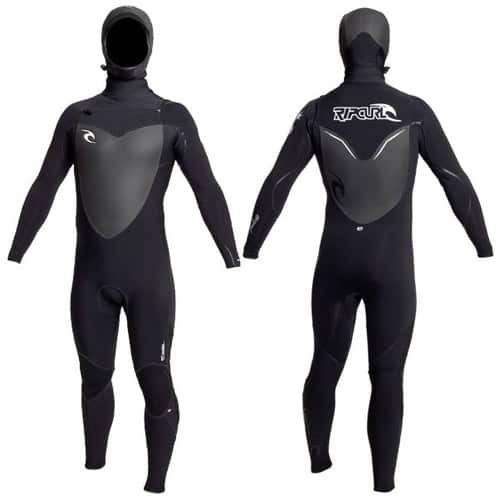
Picking out the right thickness of a wetsuit for surfing in cold water is often trying to balance the warmth of a thicker suit with the flexibility of one which is thinner. Until technology advances to the point where you can have a very thick suit which does not compromise flexibility or a very thin suit which doesn’t sacrifice warmth surfers will always have to try to find that perfect balance.
If you choose to stay warmer by using thicker neoprene you will have to work harder to paddle and move which will wear you out more quickly. If, on the other hand, you use a thinner suit to allow you to move freely, you will get colder faster so you won’t be able to stay out and surf as long.
Today’s wetsuits are significantly more advanced than those just a generation ago and can keep you warmer with less material. Today, for example, a 4/3 wetsuit feels similar to a 3/2 suit of years past. If you’ve been using an older wetsuit for a while you might be surprised at just how flexible and warm the new options are.
Thickness
Learning about what the numbers related to wetsuit thickness actually mean can help you decide what you want to purchase. The thickness of any wetsuit is measured in millimeters of neoprene which is the material that the suit is made from. Number are traditionally listed in a format like 3/2, 4/3, 5/4/3 or something similar. The reason there are two different numbers are for different areas of the wetsuit. Your legs and body area don’t need to move as freely so thicker neoprene is used. On areas like the upper arms thinner material is used to allow you to move more easily.
Water Temperature
If you’re surfing or diving in extremely cold water you’ll need a thicker suit, but water temperature is not everything. If your water sport keeps you at the surface of the water you need to factor in other things as well – air temperature and wind speed can have a big impact on how cold you will get. Taking the time to understand how different things affect how cold you’ll get is a very important part of these water sports.
Winter Wetsuits for Cold Water Surfing
Not all wetsuits are created equally. Some suits are not even intended for cold water so you’ll want to stay away from them, and many cheaper wetsuits use older style neoprene which needs to be quite a bit thicker to give you the same warmth. The main differences between a winter wetsuit and a regular one is that there is much more attention given to keeping the surfer warm and especially to keep the cold water out of the wetsuit. Things like glued and sealed seams, shorter zippers, thermo insulation lining and an integrated hood all help to keep you warmer in even the coldest water.
To help you find the right suit you can use this chart as a general guide (there is also a really cool wetsuit thickness chart that shows you required neoprene thickness for different water temperatures and different sports like surfing, scuba diving, triathlon, kayak etc…).
Water Temperature/Wetsuit Thickness
>77 F No Wetsuit Needed
72-77F Warm Weather Wetsuit (Shorty)
68-72F Spring suit, 3/2 full suit or a shorty
64-68F Spring suit or Full Suit 3/2
59-64F 3/2 full suit or 4/3 wetsuit
54-49F 4/3 wetsuit + booties or 5/3 wetsuit + booties
48-54F 5/3 or 5/4/3 wetsuit with gloves, a hood and booties


Thanks for the chart, but note that a few countries use Celsius: https://goo.gl/images/biJEsc
Also worth linking to the awesome wetsuit guide elsewhere on this site.